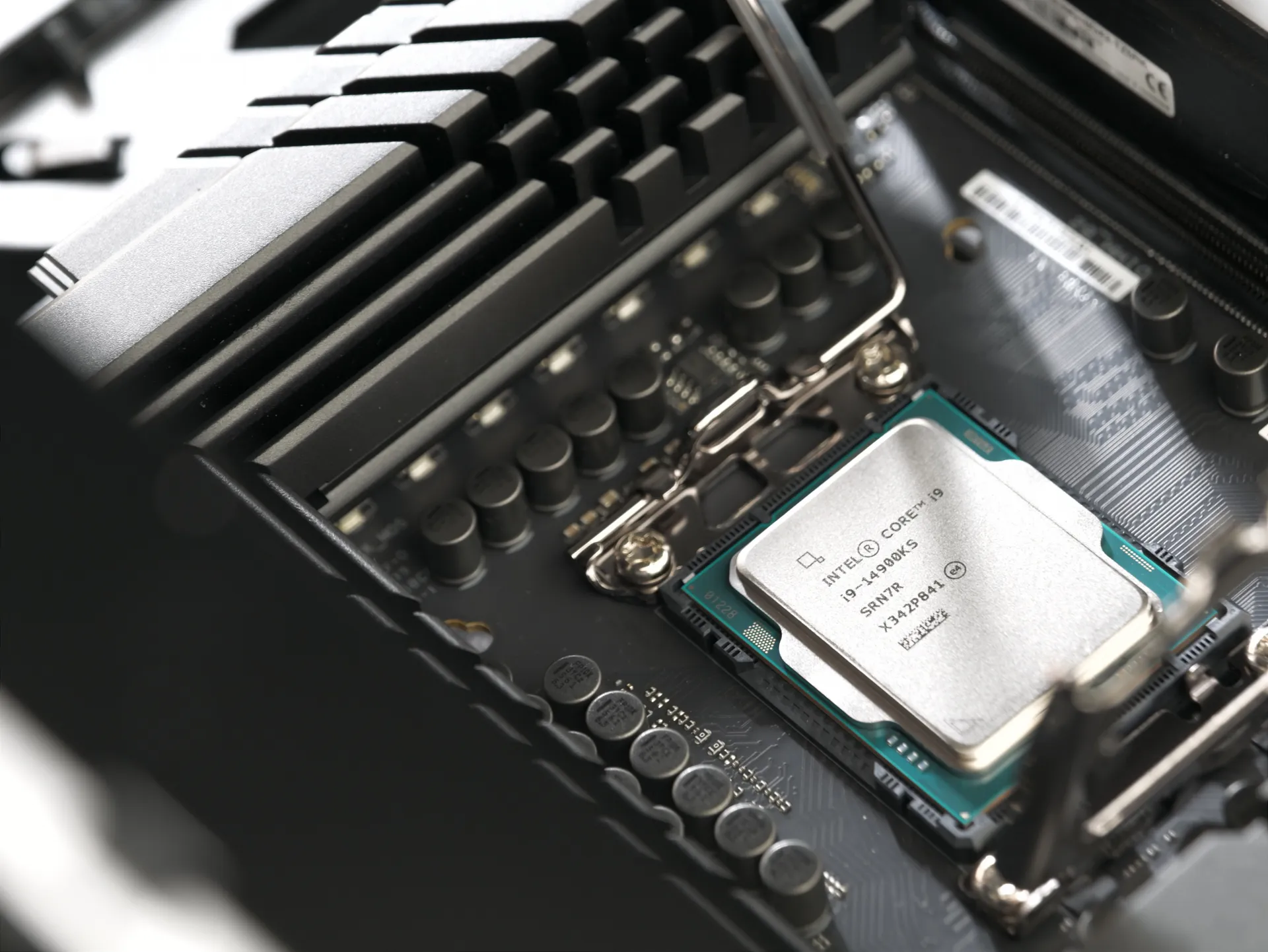Introduction - Intel Core i9 14900KS review
Two weeks ago Intel introduced the Core i9-14900KS, the latest expansion to its 14th-generation lineup, marking a new milestone as it becomes the first processor to achieve a boost clock of 6.2GHz on two cores without requiring overclocking. The Raptor Lake-based CPU, akin to its predecessor the i9-14900K, features a 24-core configuration, comprising 8 performance cores (P-cores) and 16 efficiency cores (E-cores), capable of handling up to 32 threads. The i9-14900KS includes 32MB of L2 cache and 36MB of L3 cache, along with integrated UHD 770 graphics. Intel's advancements in processor technology are exemplified by the i9-14900KS, especially in its ability to push frequency boundaries, reaching up to 6 GHz by leveraging Thermal Velocity Boost technology. This technology also facilitates an increase in the maximum boost frequencies for the P-cores to 6.20 GHz, with a minor increase for the E-cores by 100-200 MHz compared to the i9-14900K. The processor is designed for compatibility with motherboards based on the Intel Z790 or Z690 chipsets. Alongside the i9-14900KS, Intel has also released the Core i7-14700K and Core i5-14600K more recently, with KF variants of these processors available, which are similar to their K-series counterparts but lack an integrated GPU.
The power consumption of the i9-14900KS is set at a max TDP (Thermal Design Power) of PL2 253W for short-duration power states, reflecting an increase in power requirements to support its enhanced performance capabilities. PL1 is now raised to 150W. The combined total of L2 and L3 cache amounts to 68MB, supporting the processor's high-speed operations. Based on historical pricing trends for Special Edition processors like the i9-13900KS and i9-12900KS, which were around $700, the i9-14900KS is expected to be positioned similarly in the market but is tagged with a $689 MSRP. This launch sets a new precedent for default processor speeds, underlining Intel's continuous push towards higher-performance computing.
| Intel 14th Gen Core Raptor Lake Refresh | |||||
|---|---|---|---|---|---|
| Configuration | Base ClockP-Core | Max ClockP-Core | PBP/MTP | MSRP | |
| Core I9-14900KS(F) | 24/32T (8P+16E) | 3.2 GHz | 6.2 GHz | 150W/253W | $689 |
| Core i9-14900K(F) | 24/32T (8P+16E) | 3.2 GHz | 6.0 GHz | 125W/253W | $589 |
| Core i9-14900(F) | 24/32T (8P+16E) | 2.0 GHz | 5.8 GHz | 125W/253W | $564 |
| Core i7-14700K(F) | 20/28T (8P+12E) | 3.4 GHz | 5.6 GHz | 125W/253W | $409 |
| Core i7-14700(F) | 20/28T (8P+12E) | 2.1 GHz | 5.4 GHz | 125W/253W | $384 |
| Core i5-14600K(F) | 14/20T (6P+8E) | 3.5 GHz | 5.3 GHz | 125W/181W | $319 |
| Core i5-14600 | 14/20T (6P+8E) | 2.7 GHz | 5.2 GHz | 125W/181W | $294 |
| Core i5-14500 | 14/20T (6P+8E) | 2.6 GHz | 5.0 GHz | ||
| Core i5-14400(F) | 10/16T (6P+4E) | 2.5 GHz | 4.7 GHz | ||
| Core i3-14100(F) | 4/8T (4P+0E) | 3.5 GHz | 4.7 GHz | ||
Raptor Lake processors feature 2MB L2 cache per P-core, while Alder Lake processors have 1.25MB per P-core. The CPUs have 4MB of L2 cache per E-core cluster, up from 2MB previously. Additionally, the total amount of L3 cache is 36MB. Intel claims a 15% improvement in single-threaded performance and a 41% improvement in multi-threaded performance. These enhancements are primarily the result of higher frequency and thread count. The Z790 high-end platform from Intel features many PCIe Gen4 lanes and USB 3.0 Gen 2x2 20 Gbps ports. In this review we'll address the flagship Core i9 14900K; it has eight performance cores (16 threads) and 16 Energy friendly cores (no hyperthreaded) offering you a staggering 32 threads.


